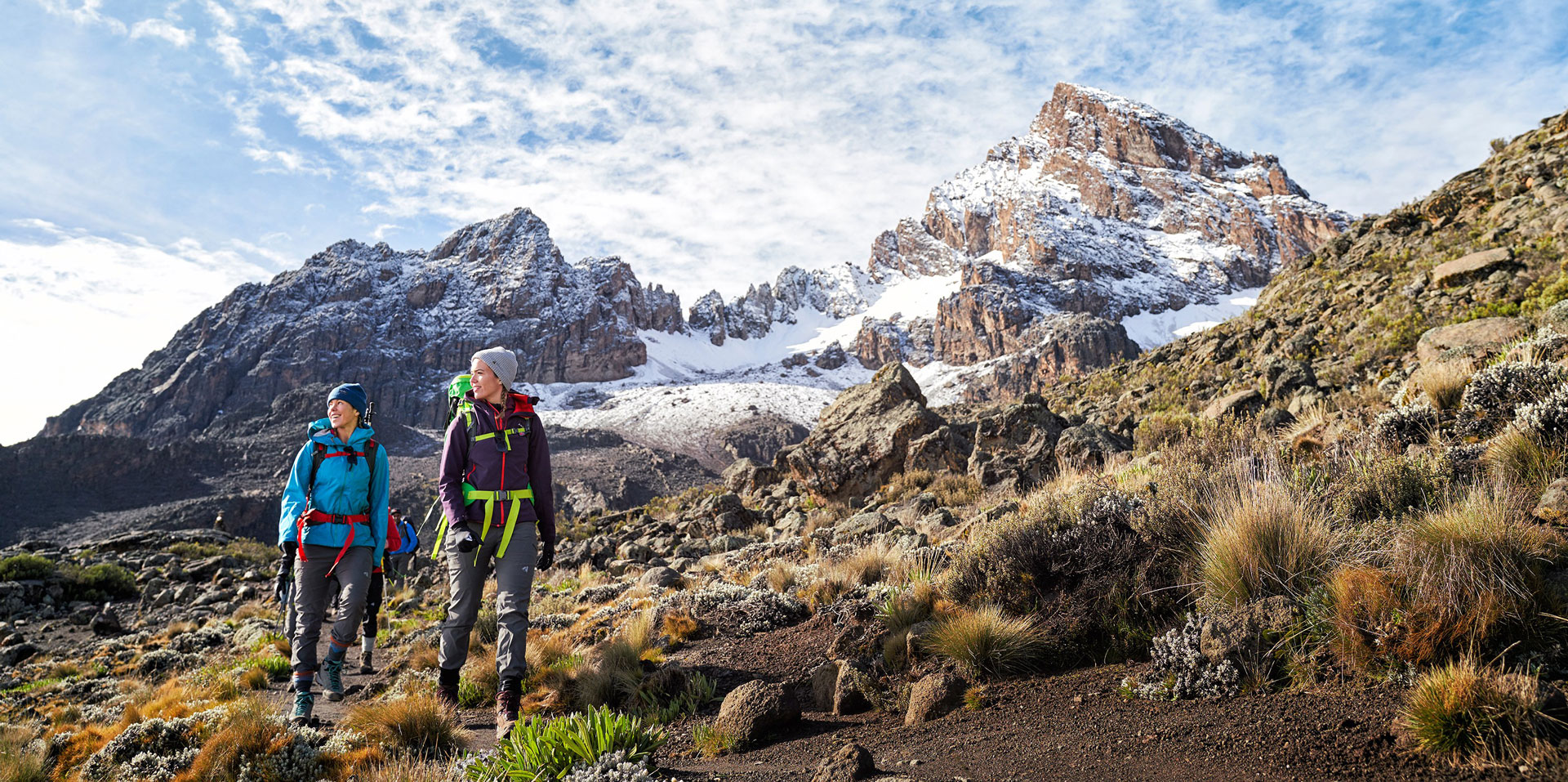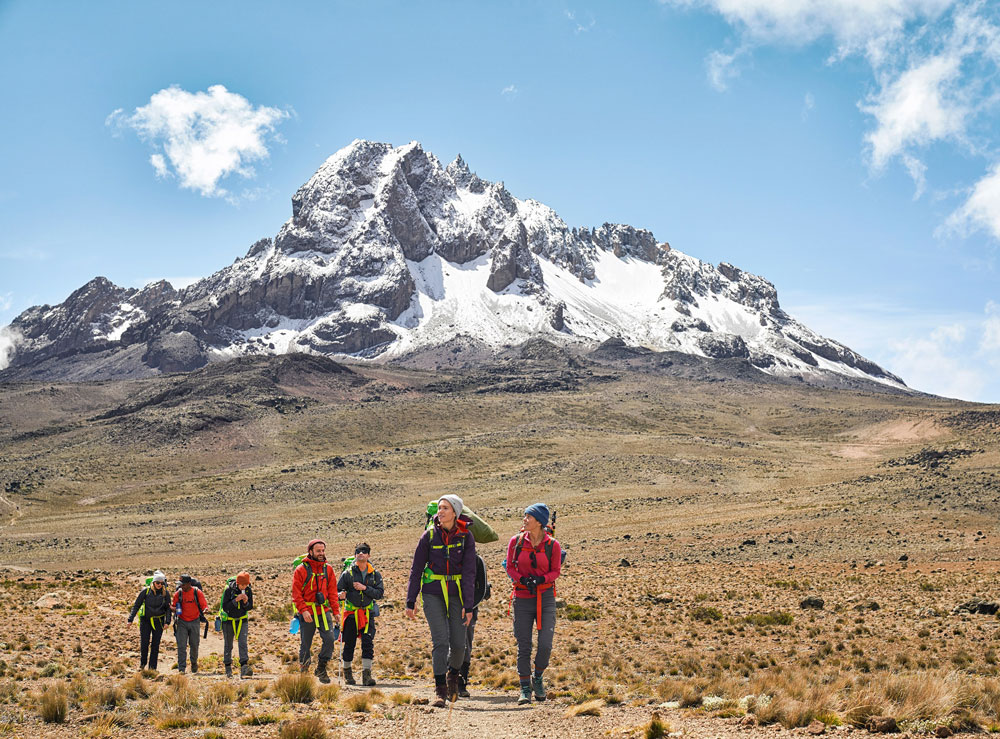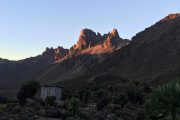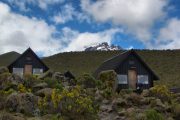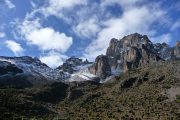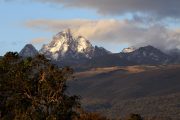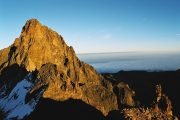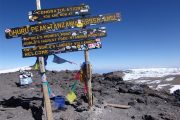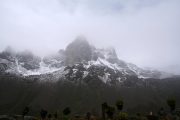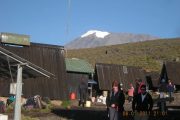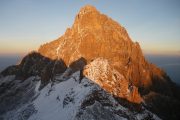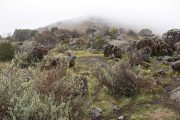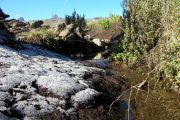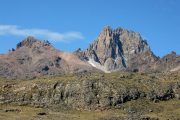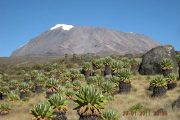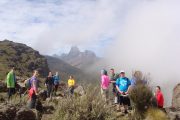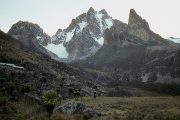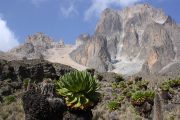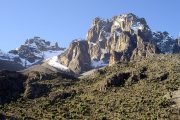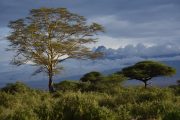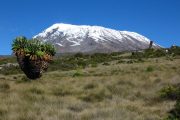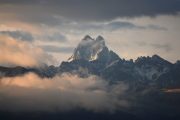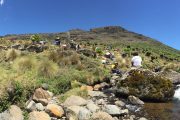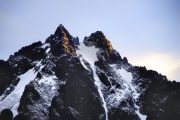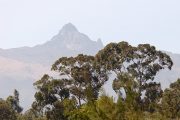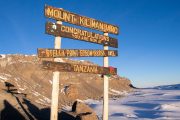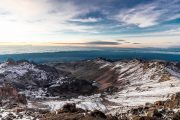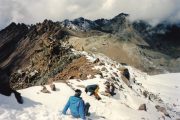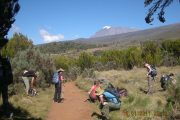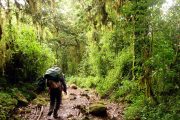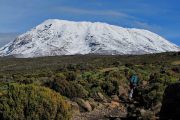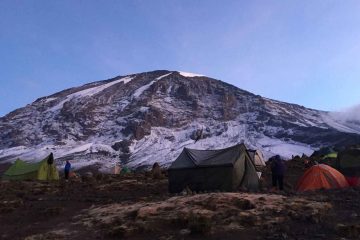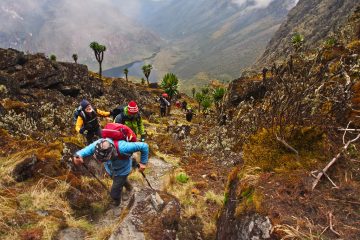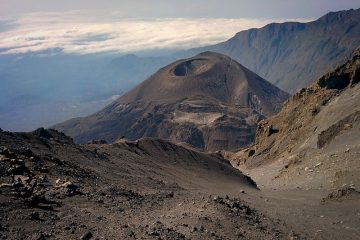Routes: Mt Kenya(Sirimon – Chogoria Route) | Kilimanjaro – (Marangu Route)
Mount Kenya and Mount Kilimanjaro though located in two different countries, share a lot in common and are so far yet so near. Mount Kenya is located in Kenya, Tanzania’s neighbouring country. Tanzania is the home country of Mount Kilimanjaro, in fact, Mount Kilimanjaro lies close to the Kenya – Tanzania border. These two mountains are Africa’s highest with Mount Kilimanjaro (5,895m) being higher than Mount Kenya (5,199m). In that case, climbing Mount Kenya would act as an acclimatisation climb to warm up for climbing Mount Kilimanjaro, Africa’s highest mountain and the world’s highest free-standing mountain. While Mount Kilimanjaro is Tanzania’s highest, Mount Kenya is Kenya’s highest, now imagine the thrill of combining the two treks that offer amazing scenery, views and world-class bragging rights under their belts.
This 2 week Mount Kenya and Mount Kilimanjaro trek combines a 5-day Mount Kenya climb using the Sirimon – Chogoria Route and 6 day Marangu route to come up with a single itinerary with an extra day of rest after travelling between the two countries of East Africa that share the same border.
Your level of stamina, determination, and mental and physical preparedness will be questioned as you seek to reach the summits of these two African giants.
Even though both mountains are not technically demanding, you will need to be in good form to climb them, both physically and mentally.
If you would like to enjoy a 2-week mountaineering adventure that features climbing Mount Kenya and Kilimanjaro, then this is the trip for you. This trip can be customised and is flexible enough to include a safari to either Kenya, Tanzania or both or a beach holiday add-ons to Zanzibar or the Kenyan coast. We can also adjust the routes to include or reduce the number of days. Please contact us for more requirements.
Highlights
- Enjoy a 14-day trekking trip to the summit of Mount Kenya and Kilimanjaro.
- Spend your nights in various camps/huts on both mountains.
- Enjoy spectacular views from both peaks’ summits.
- Spot some wildlife and birds around both mountains
How to get to Mount Kenya
To get to Mount Kenya, you have to fly into Kenya first through the International Airports that serve as Kenya’s entry points like the Jomo Kenyatta International Airport in Nairobi and the Mombasa Moi International Airport in Mombasa. Many air companies fly into Kenya from all over the world e.g Virgin Atlantic, British Airways and Kenya Airways fly regular direct flights to Nairobi. There are other airlines that offer competitive prices for air tickets that make a stop from Qatar Airways, Ethiopian and Emirates.
Nairobi Jomo Kenyatta airport is a ½ hr drive away from the capital city of Kenya, Nairobi with a distance of about 16km.
How to get to Mount Kilimanjaro
To get to Mount Kilimanjaro, you have to get into Tanzania by flying into any of the major airports like the Kilimanjaro International Airport located between Arusha and Moshi, Julius Nyerere International Airport in Dar es Salaam or from the Jomo Kenyatta International Airport in Nairobi, Kenya then travel into Tanzania by road or by air. The best way however is to fly into the Kilimanjaro International Airport which is the nearest International Airport to Mount Kilimanjaro and Moshi, the closest town to the mountain. Kilimanjaro International Airport is only 51km away from Mount Kilimanjaro and it would take you about 49 minutes to reach there by driving.
Best time to climb Mount Kenya
Best times for climbing Mount Kenya from any of the trekking routes are January to March and June to October but it can be climbed year-round. The rainy seasons typically occur in April, May and November. However, with the onset of climate change, they have been difficult to predict in recent years
Best time for Mount Kilimanjaro
The best times of the year to climb Mount Kilimanjaro are the months of December through to March, and June through to October. These are the dry months of the year and are suitable for mountain climbing. The months of November and April / May, are the rainy seasons, the weather is usually unpredictable during these months and the rains make the trails wet, muddy and are not enjoyable to climb the mountain but if at all you climb Mount Kilimanjaro during these seasons, be sure to bring along waterproof gear and gaiters.
Is the 14 Day Mount Kenya & Kilimanjaro Trek for me?
Both mountains are not technical but somehow physical. if you are a mountain climbing enthusiast then you should go for both. Kilimanjaro (5,895m), is a true test of endurance to make it to the top and it is the highest in Africa and Tanzania while Mount Kenya (5,199m) is a scenic mountain that does not demand many technicalities to climb and is the highest in Kenya, the second in the whole of Africa. For both mountains, proper acclimatisation is the key as even though they are not technical, they are high mountains and altitude sickness is most probably the biggest obstacle reaching to their summits. This 14-day trek to these mountain heavyweights of the African continent with take you to the roof of Africa. Mount Kenya will act as your acclimatisation climb then followed by the higher Mount Kilimanjaro in Tanzania.
When trekking both mountains, all you need is to follow your mountain guide’s advice while on the mountain and drink as much water as possible to combat altitude sickness. To climb Mount Kenya and Mount Kilimanjaro, you do not need to be superhuman fit, if you can comfortably walk for 6-8 hours a day with ease then you can climb either of the mountains. Remember, age is not a limiting factor, children as young as 10 and adults as old as 80 have climbed both mountains.
Mount Kenya versus Kilimanjaro
Mount Kilimanjaro and Mount Kenya share many similarities as well as differences and offer spectacular views and a chance for unrivalled adventure. We are going to take a look at what makes Mount Kenya and Mount Kilimanjaro so similar and what makes them different, unique and quite the opposite of each other.
Geology: They are both isolated volcanic massifs that tower spectacularly above the clouds of the tropical East African landscape. Mount Kilimanjaro(5,895 m) is the highest of the two followed by Mount Kenya (5,199 m) though both are the highest mountains in their respective countries. They are both extinct volcanoes with glaciers at the top.
History: Both of these mountains were first ascended by European explorers at the end of the 19th century. Due to the proven fears of rapid glacier retreats, both mountains have recently become subjects in the debate on global climate change.
Location: Both mountains are located in the East African region of the African continent although they are in two different countries, it is worth noting that these countries are neighbours that share the same border. Mount Kenya is located approximately 16.5 kilometres (10 1⁄4 miles) south of the equator, about 150 km (90 mi) on the North-Eastern side of Nairobi, Kenya’s capital.
Height: Despite the two mountains being the highest in Africa, Mount Kilimanjaro standing at an altitude of 5,895m above sea level is higher than Mount Kenya which stands at a height of 5,199m above sea level.
Peaks: The three main peaks of Mount Kenya are Batian, Nelion and Point Lenana. Mount Kilimanjaro’s peaks are the Mawenzi, Shira and Kibo whereby Kibo is the highest of the three summit peaks that contain the Uhuru peak, Kilimanjaro’s highest peak on the Kibo summit.
Duration: It takes about 4 to 8 days to climb Mount Kenya, depending on the route that you choose. A great trekking summit success chance depends on the number of days, the longer the better as it gives you extra days and enough time to acclimatize. Mount Kilimanjaro, on the other hand, would take you 5 to 9 days to climb.
Scenery: Both of these two African mountains offer amazing scenery due to their varied vegetation and climatic zones. They are both located within national parks, hence they give you the possibility of wildlife and bird watching. Mount Kilimanjaro and Mount Kenya have terrain features that range from Craggy volcanic boulders, trickling creeks, crystal clear lakes, indigenous alpine flora, and summit glaciers. Watching sunrises from the peaks of any of these mountains is a view to behold. Climbing Mount Kilimanjaro or Mount Kenya on a full moon is another sight to behold as you get to the summit with the help of the natural light of the moon.
Routes: Mount Kenya’s routes sum up to a total of eight routes, starting clockwise from the north they are the: Meru, Chogoria, Kamweti, Naro Moru, Burguret, Sirimon and Timau Routes.
The main routes leading to the summit of Mount Kilimanjaro are the Machame Route, Rongai Route, Lemosho Route, Marangu Route, Umbwe Route, Northern Circuit, Shira Route, Kilema Route used for biking, the dangerous and rarely used Western breach, and the Mweka Route which is popular for descending the mountain.
Price: Climbing any of these two mountains depends mainly on the number of people in your group, the number of days you will spend on the mountain among other factors. Mount Kenya costs lesser than Mount Kilimanjaro because Mount Kilimanjaro is more popular, has more demand and many factors play a major role in the price of the trekking package.
Accommodation: Most of the routes up both mountains depend largely on camping and accommodation is in the form of tents. There are exceptions though as some routes depend on huts/cabin as a way of accommodation. The Marangu route on Mount Kilimanjaro is a good example of the routes that depend solely on dormitory styled huts.
Difficulty and Technicality: these two mountains are not too different as they do not demand too much in terms of technical levels. Mount Kilimanjaro is walkable for most of the part. Mount Kenya, on the other hand, is a manageable trek, especially if you, choose Point Lenana as your summit point. Batian, the true summit of Mount Kenya, rises a little bit higher than Point Lenana at 5,199 meters (17,057 feet) and it offers rock and ice climbing that pushes even experienced mountaineers to the edge.
Crowds: Compared with Mount Kilimanjaro, Mount Kenya’s trails are more tranquil and quieter as it is not as popular as Mount Kilimanjaro, especially during the less-popular wet seasons of March-June and October-December. Lesser traffic means less litter, noise, people at the summit and competition for beds at the huts.

